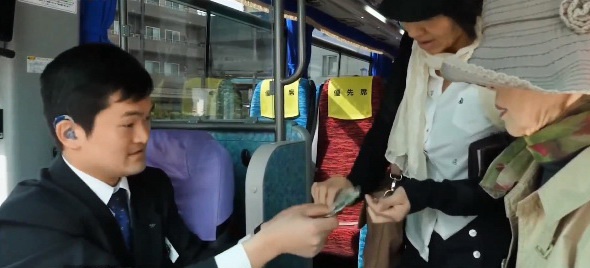In the vibrant streets of Japan, a remarkable transformation is unfolding as deaf individuals confidently take the wheel. Through determination and perseverance, they have defied societal expectations and embraced the freedom of driving. Fueling this newfound independence is a unique symbol—sticker decals—designed to bridge communication gaps and foster inclusivity. Join us as we dive into the inspiring journey of deaf drivers in Japan, discovering how these stickers have become a vital tool in their quest for equal participation on the roads.
Empowering Independence through Driving
For deaf individuals in Japan, driving was once considered an insurmountable challenge. Up until 2011, the Japanese Deaf could not legally drive cars on the roads. In 2005, the community activists started pushing for driving rights and was granted the legal privilege in 2011. The rules were: they must wear a hearing aid while driving; and, or be able to hear above 90 decibels. The requirement for hearing 90 db or higher is because the government discovered that sirens and horns honking hit 90 db. If this cannot be passed, then a vehicle decal is required at all times.
However, their unwavering spirit and dedication to breaking barriers propelled the deaf community forward. Extensive driver’s training programs, specifically tailored to meet their unique needs, have empowered them to navigate the roads with confidence. By mastering the art of driving, deaf individuals have gained not only independence but also a renewed sense of self-worth and empowerment, shattering preconceived notions about what they can achieve employment-wise, as demonstrated by Takeyama Matsuyama when he became the first deaf bus driver.

Unveiling the Sticker
The final requirement for the Japanese Deaf community if they cannot pass the 90db requirement is to display the butterfly sticker. The butterfly looks like a set of ears, but is actually a play on the Japanese word for “hearing” which is chyoukaku. Chyou is “butterfly.”

To enhance communication and ensure smoother interactions on the road, deaf drivers are to put these stickers on their cars. These stickers bear recognizable symbols and act as visual cues, alerting fellow drivers and pedestrians to the driver’s hearing impairment.
The sticker is an addition to Japan’s existing driving sticker system; the beginner, elderly, and disabled drivers.

By instantly conveying this vital information, the stickers foster understanding and encourage patience among road users, ultimately enhancing safety for all. Moreover, the stickers enable law enforcement officers to adapt their communication approach when interacting with deaf drivers, fostering a more inclusive and respectful environment.

Bridging Gaps and Fostering Inclusivity
The impact of the stickers reaches far beyond the confines of the vehicle. They are powerful symbols of resilience and determination, challenging societal norms and encouraging dialogue about disability rights and inclusivity. As these stickers become increasingly recognized, conversations surrounding the unique experiences and capabilities of deaf drivers gain momentum. This recognition and appreciation contribute to a more inclusive society, where the barriers that once hindered the participation of deaf individuals in various aspects of life continue to crumble.
By celebrating their triumphs and promoting awareness of their unique needs, we can actively contribute to a more inclusive and understanding society.
Let’s stand alongside deaf drivers in Japan as they navigate the roads of equality and inclusion. Share their inspiring stories and help spread awareness about the transformative power of these stickers. Together, we can ensure that every road becomes a symbol of unity and acceptance!
Recognizing the Signs For Novice, Disabled, and Elderly Drivers in Japan




Comments
Loading…